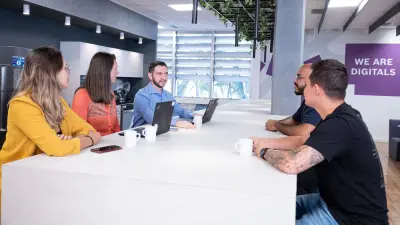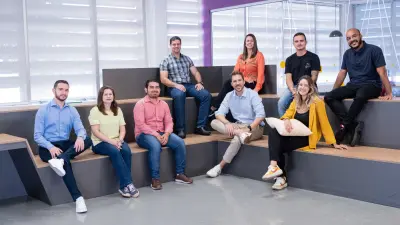Smart Work at Bosch
Creating a lasting change in our working culture
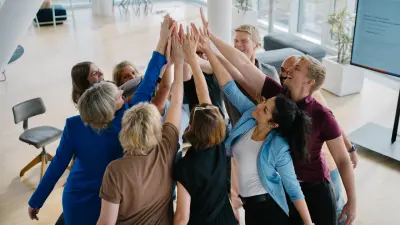
Bosch is developing a new culture of cooperation. Smart Work enables our teams to organise their working day and place of work in a more flexible way. Stefan, Guilherme, Edwina and Joachim talk about their experiences.

Whether our teams work from home, in the office, or are out on the road, it is important to us that everyone gives their best. For those teams whose presence on-site isn't a strict requirement, this also means they can work from wherever they achieve the best results. We call this Smart Work — a global concept designed to assist our teams in finding the ideal balance in today's modern hybrid work setting.
At Bosch, Smart Work is about more than just remote working: with Smart Work, teams continuously shape how, when and where they collaborate. This gives them more flexibility and autonomy. The foundation for this is both trust in our teams and the shared belief that it's performance that matters. We're all about business and results.
Since not every task can always be done remotely, Smart Work is not a one-size-fits-all model. Implementation varies from team to team: that is why the Smart Work concept enables our teams to decide together with the leader how they want to shape their collaboration. Only they know best which way of working suit them and their tasks, and how to achieve the best results. A range of new digital tools and concepts facilitate this new way of working and collaborating. The role of the physical office has changed — it has taken on a new significance as an important space for creative cooperation and personal interaction. This is underpinned by new design concepts that meet associates’ changing needs. With Smart Work, we’ve combined the best of both worlds.
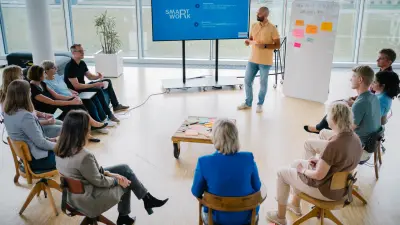
This is how our associates are putting Smart Work into practice
Discover how our associates around the world are using Smart Work to make their daily lives more flexible and collaborate successfully.
Stefan Bernhardt, Group Manager Software and Function Development at Bosch Engineering, Abstatt, Germany

How often do you come to the office?
On average, I am on site for three days, and work remotely the rest of the time. It usually depends on what’s on the agenda at the time. Currently, we have a lot of workshops in which we give each other plenty of feedback. We prefer to do that on site as a team. At other times, there are months when I’m at home a lot. It always depends on what makes sense for any given day.
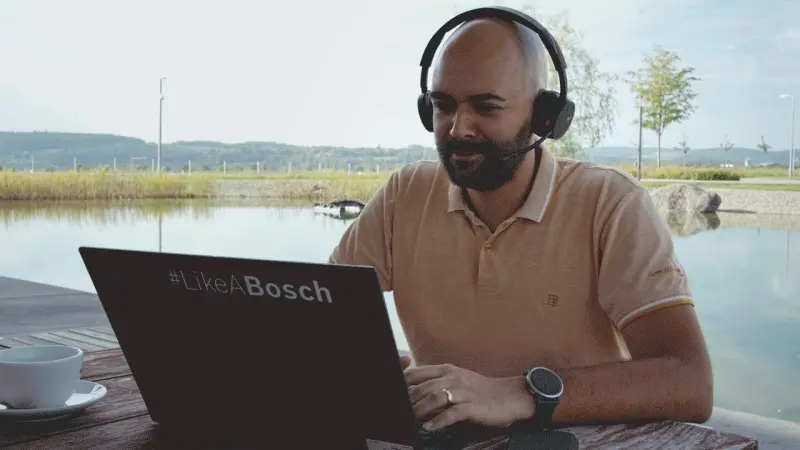
How has Smart Work changed the way you work together?
When COVID-19 struck, we suddenly had to switch to working remotely from one day to the next — which at first meant finding a lot of middle ground, but we made it work by cooperating. For example, during this period we even managed to carry out a reorganisation of our team on an entirely virtual basis. Since then, however, we’ve learned a lot, changed things, and developed initial ad hoc solutions into structured ways of working.
What is the great advantage of Smart Work for you?
For me, the flexibility gained is incredible, which is particularly helpful at the moment — I am in the middle of building a house. Since it often doesn’t matter where I work from, I can also be on the construction site for a short time and attend a meeting. Before COVID, when one of your children came down with something, at least one parent couldn’t go into work. Now, I can work even with a child in the background in extreme cases. Of course, that’s not easy — but it’s better than coming to a complete standstill.
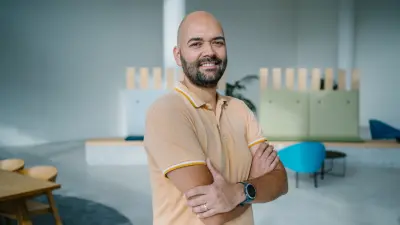
Enabling teams

SmartWorkshop & PitStop
How do we strengthen our team spirit despite working together virtually? How do we design onboarding processes in a hybrid setting? And what new physical space concepts are needed in the office? The change in the way we cooperate also brings challenges that require innovative and flexible solutions. Smart Work has taken us on a journey of continuous learning and rethinking of how we want to work together. That's why Bosch is coming up with different ideas to help teams and their leaders find the right collaboration model for them.
One of these is the SmartWorkshop. It mainly focuses on reflection and communication about what has gone well in the past, what challenges have arisen and what can be done to improve collaboration. Conducting a SmartWorkshop helps teams to develop their own ways of working based on their responsibilities and individual and team needs.
In addition to the SmartWorkshop, Bosch developed a new format — the Smart Work PitStop. It incorporates all the aspects learned from working in a hybrid way, and offers teams the opportunity to take a look at their current collaboration in short workshop sessions. The question at heart of the PitStop is this: how can we continuously improve our collaboration to deliver the best performance?
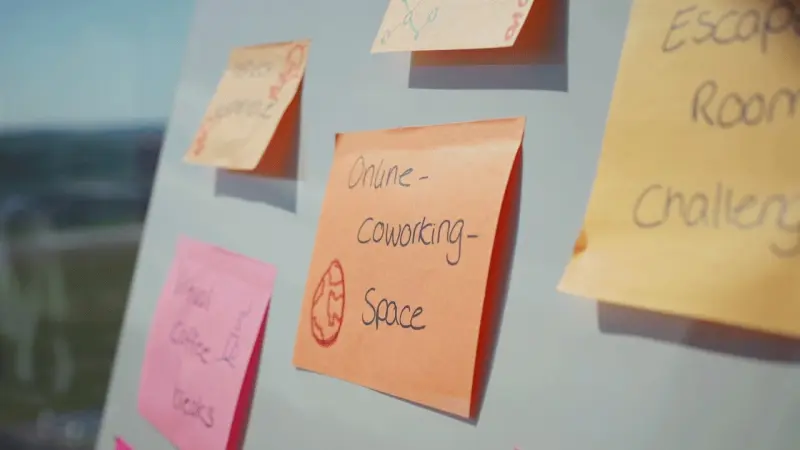
How did your team benefit from the SmartWorkshop?
Shortly after the end of the pandemic, there was a phase when hardly anyone from our team came to the office and team building suffered a little as a result. For us, the key was to run a SmartWorkshop. This helped us to find out and understand our individual needs. After the workshop we felt automatically motivated to strengthen our cooperation. Together, we worked out a plan in the workshop about what we specifically want to do when we’re in the office. Something we frequently heard during the workshop was: I don’t want to come into the office and just have a headset on all day — I’d rather have meaningful team days where we compensate for all the things that we neglect on our remote days: networking, creative work and personal interaction. As a result, we’ve identified that we should completely dedicate ourselves to these things once a week, which has convinced people to come back to the office too.

What are the important aspects of the SmartWorkshop?
We were the first group to conduct a SmartWorkshop in our part of the business. Since I’m now a proponent of the idea, I’ve now lead SmartWorkshops for many other teams. There are no specific rules regarding the outcome. We usually start with a review: what went well, and what did not go so well in the fully-remote period? What solutions did we find that we want to keep? After that, we look at new ways of solving problems — for example, themed team days or group sessions and stand-ups. Onboarding is often an important issue, too: The workshop can, for example, be used to establish clear rules about communicating accessibility, availability, and transparency, so that everyone knows very clearly when they can reach whom. The most important thing I’ve learned from the recent past is that communicating how to work together is essential for Smart Work to function well. And SmartWorkshops offer us the best possible foundation for working together.

Edwina Fitri Ardlinas, Marketing Associate at Bosch Power Tools, Jakarta, Indonesia

What is the importance of Smart Work in your life?
Decades ago, my father fulfilled his dream of owning a farm. When he became seriously ill a few years ago, my family and I faced the question of what to do next. Leaving the land bare and dismissing our two associates was out of the question for us. Therefore, I decided to take over the business with my two younger brothers and our mother. We felt we had no choice but to continue pursuing his passion. At that time, I had only been working for Bosch in Indonesia for about a year. Without the opportunity to work remotely some of the time, I would not have been able to take on my father’s legacy.
What has Smart Work changed for you?
Even before the pandemic, I could work from home if necessary and my leaders were very understanding of my situation from the beginning. Thanks to Smart Work, I can keep my full-time job at Bosch and still maintain the farm. Of course, it’s important to continue to pay the same attention to your work as you would in the office. Since I know I have enough time for my private commitments, I can better concentrate on my job.

Joachim Köppen, Department Manager for Performance Controlling of Central Purchasing in Global Business Services Stuttgart-Feuerbach, Germany

What advantages do you think Smart Work has?
Of course, the huge advantage for us is the great degree of flexibility. But Smart Work has significant added value — not only in terms of work life balance, but also for our results. If you are at home anyway, it is less of a problem to, for example, attend an early meeting with colleagues from Japan. I also find that our response time has greatly increased through the chat option and as a result, questions are often resolved more quickly. Our team is also more punctual to meetings now because they do not have to physically get to the meeting location.
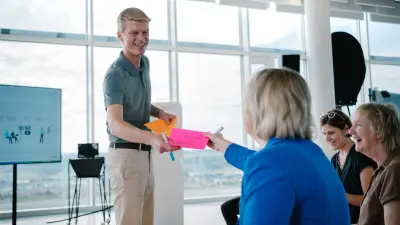
What is particularly important for the success of hybrid cooperation?
A key part of the success of hybrid working is our IT working smoothly. We therefore have a page on the intranet that provides useful information about the digital tools and resources we have available. And of course, we now pay even more attention to ensuring that deadlines, processes, and projects are visible and documented for everyone to see. For example, we have process calendars stored in our Outlook calendars. I can simply select the second calendar and then see all the important process steps as an overlay. We can use these add-ons to manage our work no matter where we are.
Has Smart Work also changed how you collaborate across departments?
We have many cross-departmental teams working on common themes. These teams existed before the introduction of Smart Work, but now their coordination has become even more important. We also hold team-building events across departments to further support the exchange of best practice achieved through Smart Work.
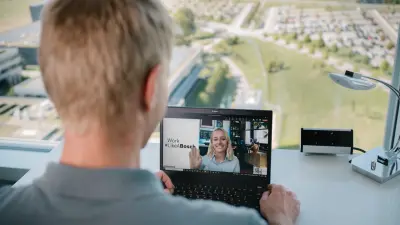
What challenges do you face as a manager surrounding Smart Work?
You don’t hear about many things organically anymore. Sometimes, for example, you might hear about side issues in the office that are perhaps not important enough for someone to call you about — but which can certainly become relevant. Therefore, it is particularly important to remain in constant contact and to actively communicate. Another challenge is the onboarding of new associates. For example, we ensure that those who run the onboarding are on site more frequently at the beginning. You cannot just expect people to automatically connect with one another when work remotely. So, it is all the more important to strengthen team cohesion proactively, for example, through team events.
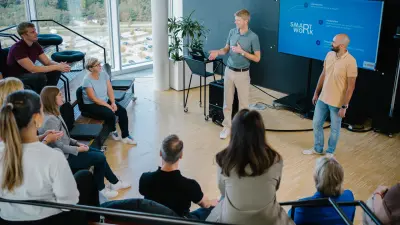
Guilherme Alves, Workplace Project Leader in Facility Management, Bosch, Campinas, Brazil

What does your work at Bosch entail?
In my job, I shape the future of the workplace — and I do so by adapting working spaces to the needs of our teams. That does not only mean optimising the digital environment — it also includes redesigning our office space to accommodate hybrid work. I focus on how people best work together as a team in a physical office. As a project leader, I work with a team of architects and engineers to redesign the office space, which is aided by being close to the users and other departments. Together we make our work spaces fit for the future!
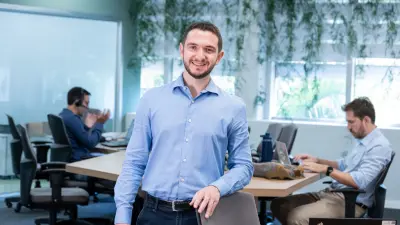
What are the key factors when redesigning the working environment?
I recently redesigned our 2,000 m2 Bosch Digital office in Campinas with my team. Before we started planning, we held a SmartWorkshop with some of the people involved. The first exercise in the workshop was to find common goals that would lead people to work more creatively when they need to, or in a more concentrated way when it’s required - because the right environment automatically results in better performance in the end.
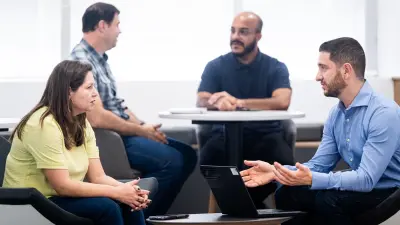
What changes has the room design entailed?
We now have plenty of space for teamwork that goes beyond mere meeting rooms. Our office contains spaces that stimulate creativity and innovation through their design. There are areas where you are left undisturbed and can, for example, focus on a call. We’ve also made a lot of improvements in technical terms, such as by providing more sockets or cameras in meeting rooms. In addition, we ensured that associates feel even more at ease: we have expanded the relaxation areas, integrated more plants and colors into rooms, and added in more comfortable seating. Once the changes were implemented, it was very noticeable how many people returned to the office — not because they were obligated to, but because it suddenly made sense to be there. Seeing the surprised and happy faces of the people at our reopening event made it feel like our efforts had been a great success.
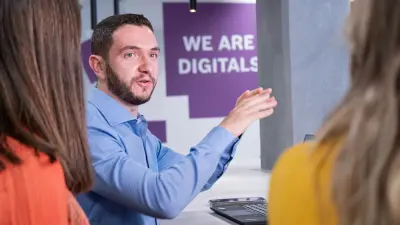

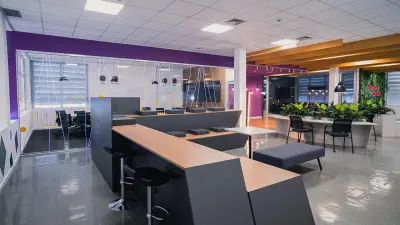
But in the end, the biggest success for me has been that they actually use the new office. At first, I was afraid that colleagues were only coming in because it was new, but today, about six months later, people continue to come to the office regularly. Overall, it’s safe to say that the meaning of the term office has changed at Bosch. It used to be a place where I had to come to work. Today, it is a place that improves face-to-face collaboration, and is available when it makes sense for me and my team to be together.

